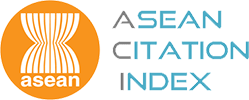Impact of Students’ Trust on Social Networking Services
DOI:
https://doi.org/10.17687/jeb.v9i2.801Keywords:
social networking services, trust, information disclosure, effort expectancy, network effectAbstract
Web 2.0 technology is thewebsite and platform for sharing virtual information and communication worldwide. Social networking services (SNSs) technology perform the role of human interaction. The SNSs users can instantly transfer and receive information from other users. Nevertheless, users experience trust issues when delivering information to social networking platforms. Generally, the trust component is the fundamental issue in sharing any type of information on online platforms. Therefore, the study attempts to examine the impact of students' trust in using social networking platforms. Accordingly, the study collected 110 valid survey questionnaires using a social media platform. The study also used the Statistical Package for the Social Sciences (SPSS) 21.0 software for data analysis. The findings revealed that students’ trust in information disclosure and effort expectancy is essential for using SNSs. The study enhances knowledge of how to improve SNSs trust by extending the factors conceived of users' trust in social networking sites. The study provides knowledge on integrity and honesty to develop students’ trust in using SNSs








